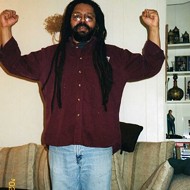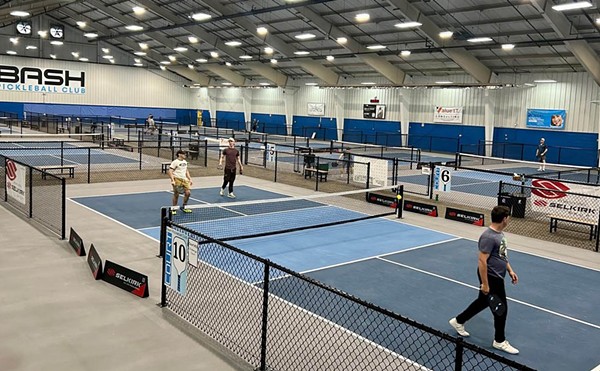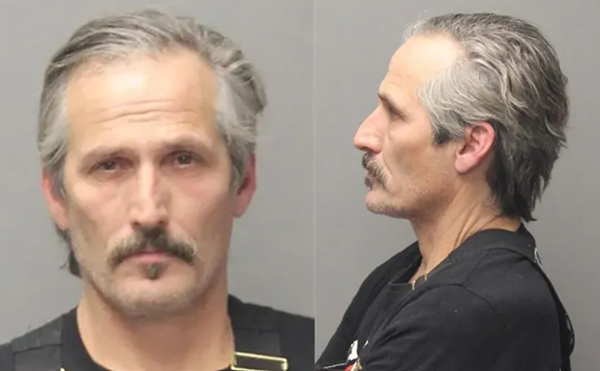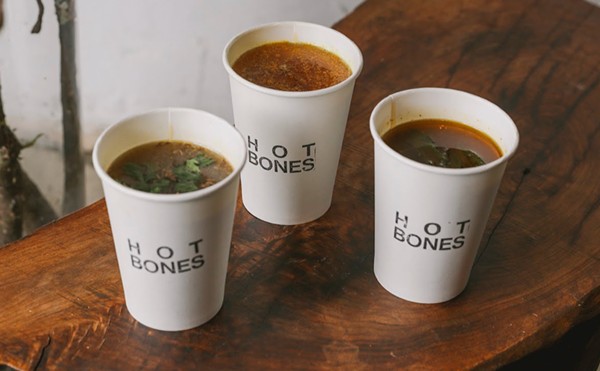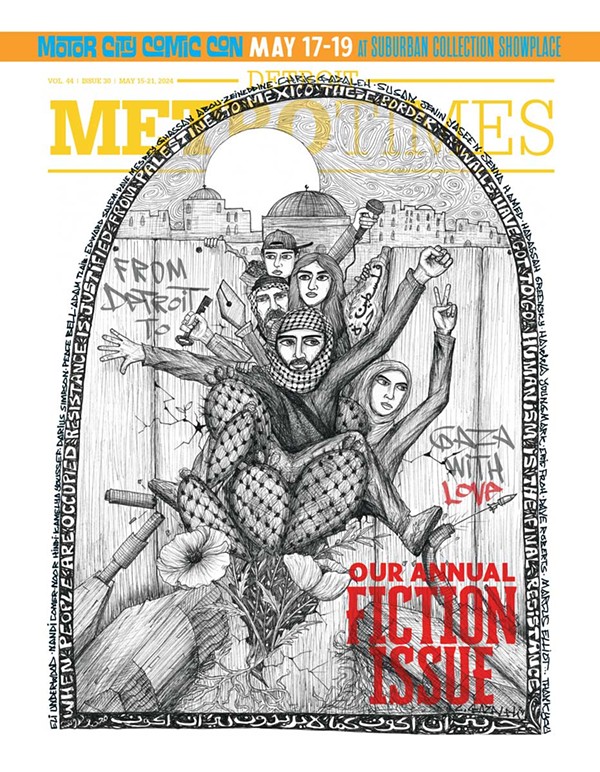When I say el zocalo, I'm not talking about the restaurant on the southwest side of Detroit, although I have eaten there and enjoyed the food. However, I am talking about something Latino residents in the area may well remember from back home.
The zocalo is a sort of a combination park and town square. In the smaller cities it's usually the center of town. In larger cities, there may be zocalos anchoring neighborhoods. The area in the middle has walkways, greenery and benches. Across the street on every side are cafés, restaurants, boutiques, hotels, galleries, convenience stores and the like. Street vendors might have their carts in the area.
In the evening, families come out and stroll around the zocalo (don't try to walk against the flow there, zocalos have established and pretty rigidly followed walking patterns), chat with friends, shop or have something to eat. Sometimes musicians play in the park. If you are a tourist, the zocalo is a good place to meet locals, practice your Spanish (while the locals seek out Norteamericanos to practice their English), or get tips on what to do around town. If there is going to be a public gathering it will probably take place in the zocalo.
Imagine a much larger Harmonie Park with all of the above-mentioned amenities and lots of people strolling around — that's a zocalo. We could use some zocalo spirit in several areas of Detroit, and some suburbs could probably use it too. Main Street in Royal Oak and Nine Mile in Ferndale have some of that, downtown Birmingham too. Southfield doesn't have it, nor does Oak Park.
It's all about creating areas with that elusive feature known as walkability. Christopher Leinberger, a land use strategist and author of the book The Option of Urbanism, defined walkability during an interview on National Public Radio last July. "It's where you can get your daily needs met within walking distance, and walking distance is considered to be about a half mile," he said. "You'll find at least a grocery store that can service you on a daily basis, a hardware store, drugstore, restaurants, maybe your kids can walk to school and in the best of all possible worlds, you can walk to work."
Sounds like the kind of area I grew up in before mall mania and national chain stores took over the country. My family lived on Humboldt off Myrtle on Detroit's west side. There was an A&P supermarket on the corner. Other businesses around the intersection included a dry cleaner, a secondhand store, a German beer garden and a shoe repair shop. Vendors sold tamales from carts on the corner. A block over at Myrtle and Lawton there was a playground and a gas station. Down Humboldt in the other direction, the Western Farmers Market sat at the intersection of Michigan Avenue. I could walk to Briggs Stadium, and downtown was a short bus ride along Michigan.
When I was 12, we moved to another walkable area. Our neighborhood was bounded by Puritan, Livernois and McNichols. It seemed like everything — a furniture store, a lamp shop, drug stores, bakeries, restaurants, supermarkets, a movie theater, post office, banks, schools, a garage and a hardware store — was within walking distance.
Don't tell me I'm living in the past. San Francisco, New York and Boston were named the most walkable cities in a study Leinberger advised last year. Former New Yorker Claire Nelson dreams about streets full of shops and people walking around. She's the proprietor of the Bureau of Urban Living on Canfield near Second Avenue in the Midtown area. The Bureau is a small knickknack gift shop across from the Traffic Jam restaurant.
"I'm passionate about three things," says Nelson, whose husband, Francis Grunow, a former New York City planner, now studies law at Wayne State University. "We need to create neighborhoods and have more storefronts with small mom-and-pop shops. More storefronts mean more eyes on the street, more safety and connectedness between neighbors. We need more public spaces, more green space, places where people can sit and gather. Transit is the other big thing. A lot of these activities naturally occur at subway stops, light rail stops."
Could be that we're headed in that direction with a planned light rail line along Woodward Avenue from downtown to the New Center. The route passes through Midtown, where local developers have planned a greenway around the area that connects it to the Brush Park area. The route also passes a slew of businesses that have popped up in recent years (notwithstanding the recent closing of Zaccaro's Market), and loft developments continue to be built. The Willys Overland Lofts are coming together across from Nelson's little store, and she hopes the 50,000 square feet of commercial space on the ground floor is broken up for small storefronts rather than something like a big health club.
Part of Detroit's development dilemma is that we lost a culture of local small businesses over the past few decades, as automakers provided good-paying jobs and entrepreneurs moved to the suburbs. Last week's bankruptcy filing by Chrysler and the possibility of General Motors taking the same route are the most recent signs that those days are over. We need thousands of small businesses cropping up to provide the needed employment and tax base if Detroit is going to enter a future time of vibrancy. Small local businesses keep money circulating in the community and don't have absent corporate owners whose only gauge of success is megaprofits.
I say Detroit, but I really mean the entire southeast corner of lower Michigan. As much as some folks feel like they don't need each other, watching the Big Three automakers sink proves without a doubt that we're all in the same boat. "Ultimately there is no substitute for increased vibrant central cities," says Lou Glazer, president of the nonprofit Michigan Future Inc. "We've got to have central cities at work. It's horrific, yet sort of wishing and hoping that central cities don't matter is wrong. It turns out to matter so much that we've got to figure out how to overcome barriers."
All of it, from a small shop employing three people to an entire region connected by a great public transportation system, must come into play. And it will take decades to get it all in place.
Ten years ago, my wife used to walk my daughter around the neighborhood looking for other mothers with small children. We live in Greenacres, considered one of the more affluent city neighborhoods. As nice as things are around here, the nice houses and all the lovely trees, there is no gathering place where mothers of young children might meet and greet. Sometimes my neighbors complain about teenagers gathering on the corners or playing basketball in the street. Where else do you expect them to be? There's nothing here but houses, nice houses, but little else that you can get to without a vehicle.
We need a neighborhood zocalo. Someplace we can walk to. Walking is the best exercise for people; it may well be the best exercise for community.
Larry Gabriel is a writer, musician and former editor of Metro Times. Contact him at [email protected]
